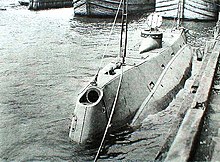USS Long Beach (CLGN-160/CGN-160/CGN-9) was a nuclear-powered guided missile cruiser in the United States Navy and the world’s first nuclear-powered surface combatant.
Royal Australian Navy warships HMAS Derwent DE-49, and HMAS Swan DE-50, alongside the US Navy’s nuclear powered cruiser, USS Long Beach in Australia
Guided Missile Cruiser USS Long Beach anchored off Fremantle Western Australia in August 197



She was the sole member of the Long Beach-class, and the last cruiser built for the United States Navy to a cruiser design; all subsequent cruiser classes were built on scaled-up destroyer hulls (and originally classified as destroyer leaders) or, in the case of the Albany-class, converted from already existing cruisers.[citation needed]
Long Beach was laid down 2 December 1957, launched 14 July 1959 and commissioned 9 September 1961 under the command of then-Captain Eugene Parks Wilkinson, who previously served as the first commanding officer of the world’s first nuclear-powered vessel, the submarine USS Nautilus (SSN-571). She deployed to Vietnam during the Vietnam War and served numerous times in the Western Pacific, Indian Ocean and Persian Gulf. By the 1990s, nuclear power was deemed too expensive to use on surface ships smaller than an aircraft carrier in view of defense budget cutbacks after the end of the Cold War. Long Beach was decommissioned on 1 May 1995 instead of receiving her third nuclear refueling and proposed upgrade. After removal of the nuclear fuel, superstructure, and sections of the bow and stern, the hull segment containing the reactor and machinery spaces was moored at Puget Sound Naval Shipyard and sold for scrapping.
Configuration
Long Beach was originally intended to be a smaller frigate, but was then redesigned and expanded to a cruiser hull, allowing for an open space just aft of the bridge “box”. This open space was first planned to accommodate the mounting of a Regulus nuclear-armed cruise missile, but was then changed to four launch tubes for the Polaris missile. However, the space was eventually occupied by the 5″/38 caliber gun mounts and the ASROC system.[4] Long Beach was the last cruiser built with a World War II-era cruiser hull style,[5][6] as later new-build cruisers were built with different hull forms, such as the converted frigates Leahy (DLG-16), Bainbridge (DLGN-25), Belknap (DLG-26), Truxtun (DLGN-35), and the California and Virginia classes, or the Ticonderoga-class cruiser that was built on a Spruance-class destroyer hull.[citation needed]
The high box-like superstructure contained the SCANFAR system, consisting of the AN/SPS-32 and AN/SPS-33 phased array radars. One of the reasons Long Beach was a single-ship class was because she was an experimental platform for these radars, which were precursors to the AN/SPY-1 phased array systems later installed on Aegis equipped Ticonderoga-class cruisers and Arleigh Burke-class destroyers. Photos taken at her commissioning and for some time thereafter, show that the taller, narrower AN/SPS-33 panels were not installed on the superstructure until a later date. At the time, Long Beach had the highest bridge of any ship smaller than an aircraft carrier.[citation needed]
Artist’s concept of nuclear powered cruiser design from 1956.
In addition to steel, Long Beach was built with 450 tons of structural aluminum.[7] Because of this unusually high quantity of aluminum, she was assigned the voice radio call sign “Alcoa”.[7] The ship was propelled by two nuclear reactors, one for each propeller shaft, and was capable of speeds in excess of 30 knots (56 km/h). The ship was originally designed with “all-missile” armament, but was fitted with two 5″/38 caliber gun mounts amidships on the orders of President John F. Kennedy.
https://ift.tt/WGpO96r
from Blogger https://ift.tt/tHsB4vb
via IFTTT






































